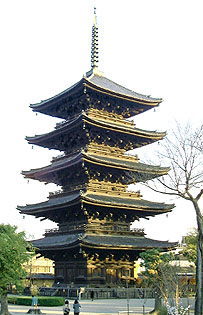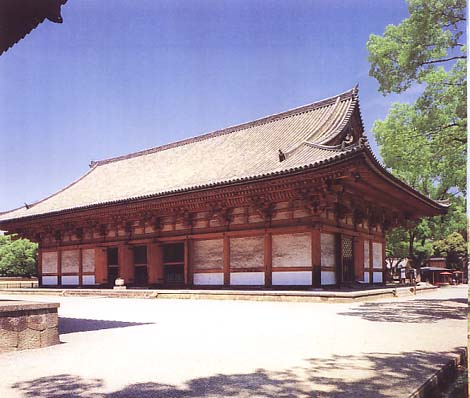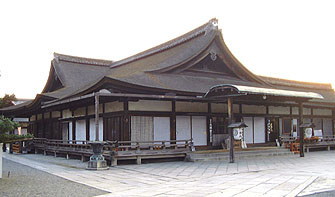Buddhas of Toji-Temple.
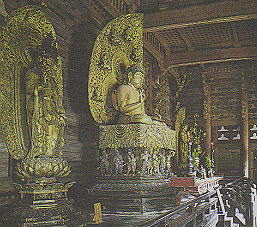 Yakushi-nyorai(Bhnisajyaguru) Triad in the Kon-do(Main Hall). |
Kon-do, Yakushi Triad and Twelve Heavenly Generals The statues of the Yakushi Trinity (Yakushi-nyorai and his two attendants, Nikko and Gakko Bosatsu) look filled with mercy to heal the sick in body and soul. The statues of the Twelve Sacred Generals placed under the "Mokakeza"(the seat of Nyorai), are said to have been carved by Kosho, the 21st generation sculptor of Buddhist images after Jocho, and are representative masterpieces of the Momoyama period. |
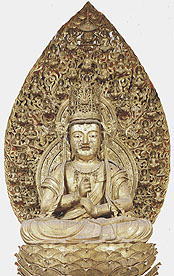 |
Set of twenty-one Buddhist statues installed in the Lecture Hall Twenty-one Buddhist statues are arranged according to the Mikkyo Mandala described in the main sutra of Esoteric Buddhism, with the principal one, Dainichi-nyorai in the center. The Esoteric Buddhist statues which were brought from China by Kukai can be observed in the Ko-do(Lecture Hall). One characteristic is the special arrangement of the figures in the hall. On the Shumi-dan platform, Tathagatas of the five wisdoms are placed in the center, five Bodhisattvas are on the right side, five Fearful Kings are on the left, and Brahmadeva, Sakrodevanam-indra, and the Four Guardian Kings are arranged around them. The grouping of the 21 figures is in the formation of the Karman Mandala. Unlike the usual arrangement it self has a meaning in Esoteric Buddhism. |

